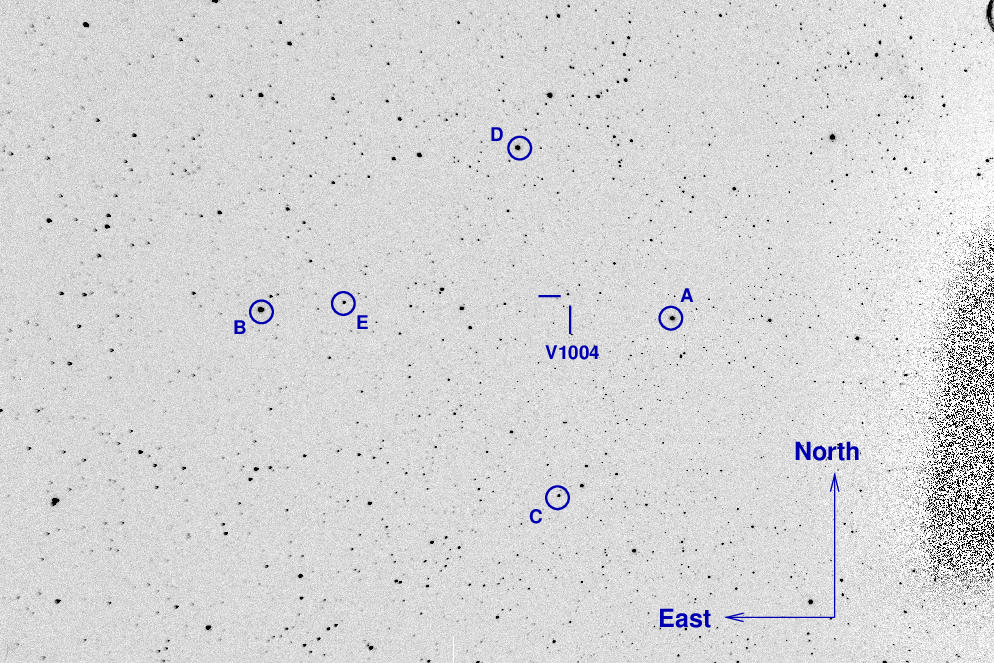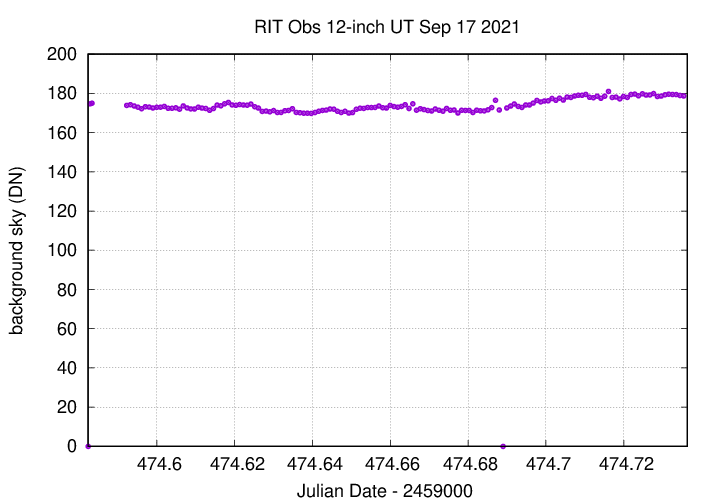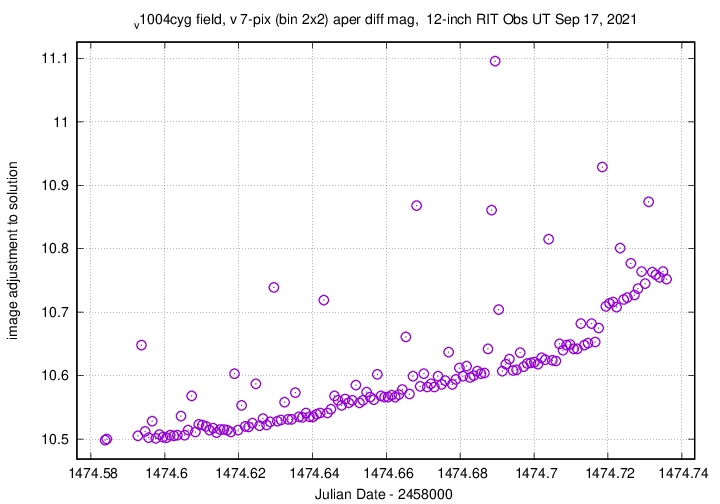
On the night of Sep 16/17, 2021, students in the University Astronomy class came to visit the Observatory. The instructor of the course, Emily Wilson, and AST grad student Shaelyn Shadwell kindly accompanied the students to help explain things.
Later in the evening, undergraduate student Remi Schneider and I observed the eclipsing binary star V1004 Cyg for her capstone project.
We set up two telescopes in front of the garage, so that people could look at targets which were all low in the East as the sun was setting: the Moon, Jupiter, and Saturn. One was the Unitron refractor donated by professor emiritus John Shaw:
The other was the "sheetmetal reflector" I purchased several years ago at one of the RocheSTARFest events thrown by the Astronomy Section of the Rochester Academy of Science (ASRAS).
The students also learned about our two permanently mounted telescopes. The 14-inch Celestron in the roll-off structure was a favorite.
Below are a selection of images taken by the University Astronomy students with their smart-phone cameras.
Samantha Kulwanoski:
Casey Hults:
Chris Falcone took images of the Moon ...

... and Jupiter -- note three of its moons ...

... and Saturn. His camera caught both the elongated image of Saturn and its rings, through the eyepiece, and the people and objects surrounding the telescope.

After several hours of energetic discussion, the class returned to campus. Meanwhile, back at the Observatory, capstone student Remi Schneider and I prepared to acquire images of the star she is studying.
RIT undergrad Remi Schneider and I acquired images of the eclipsing binary system V1004 Cyg as part of her capstone project.
We had no major problems during the night, and acquired a good set of measurements.
The main setup was:
Notes from the night:
The object is located at
RA = 19:50:29.44 Dec = +33:08:32.2 (J2000)
A chart of the field is shown below. The size of the chart is about 31 x 26 arcminutes.

I've marked the location of several comparison stars as well. You can find reference magnitudes for these stars at the AAVSO:
I used the star marked as "C" in the picture above, or "118" in the AAVSO charts, to shift the instrumental magnitudes to the standard scale.
| Label | B | V |
| C | 12.717 | 11.803 |
I took a photo of the finder TV's screen when pointing to this target; this could be a useful reference for the future:

The sky value shows no changes due to clouds.

The FWHM graph below shows no big changes.

Using aperture photometry with a radius of 7 pixels in B and V filters (binned 2x2, each pixel is 1.24 arcsec, so a radius of 8.7 arcsec), I measured the instrumental magnitudes of a number of reference stars and the target. Following the procedures outlined by Kent Honeycutt's article on inhomogeneous ensemble photometry, I used all stars available in each image to define a reference frame, and measured each star against this frame.
Sigma-vs-mag plots show that the floor was about 0.008 mag after I removed images with large outliers.

The change in zeropoint was driven by airmass.

Last modified 9/20/2021 by MWR.